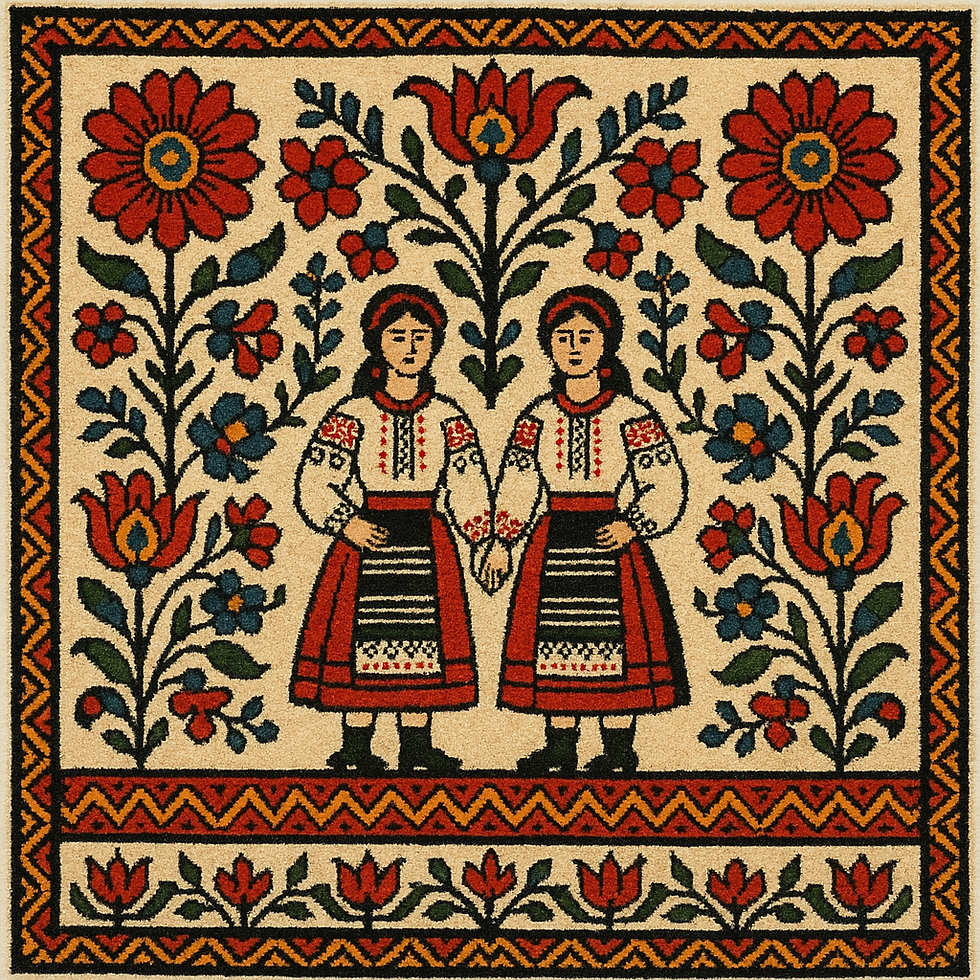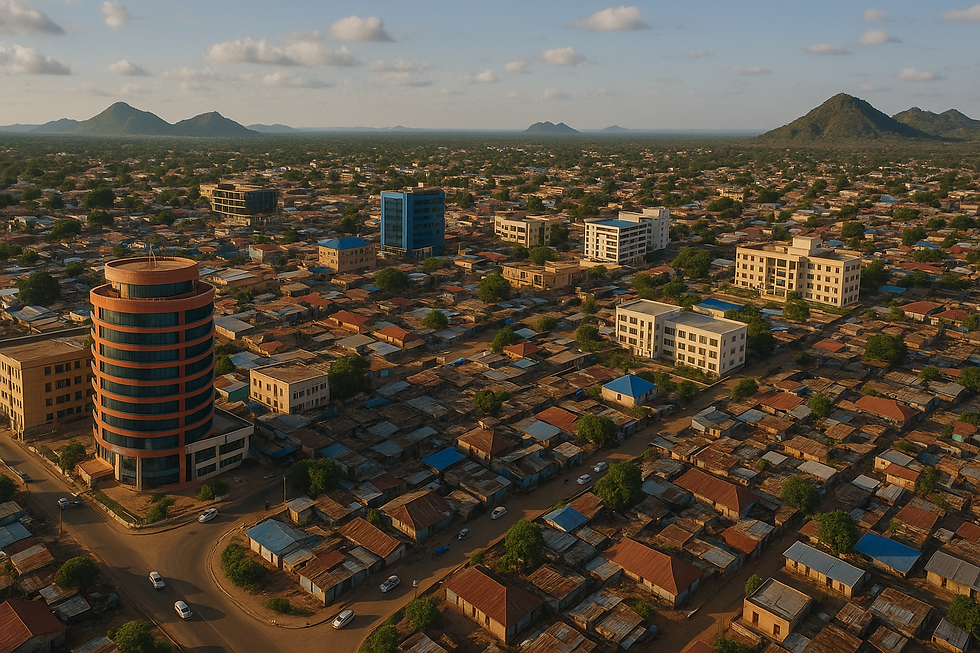"Between Forest and Factory": Romania’s ESG Crossroads in a Changing Europe
- tinchichan

- Aug 1
- 5 min read
The Carpathians rise like a whisper across northern Romania, their forests thick and ancient, home to bears, lynx, and centuries of myth. Further south, the Danube flows wide and slow past wind-swept plains and industrial towns, before spilling into the Black Sea. Between forest and factory, tradition and transition, Romania is writing a new chapter—one where sustainability is no longer just an EU requirement, but a national imperative.
Romania, a young democracy inside an old continent, is navigating the ESG era with both urgency and hesitation. A country rich in biodiversity, cultural heritage, and industrial potential, it is also burdened by inequality, infrastructure gaps, and governance legacies. Its greatest strength may be its position: both inside the EU and at the edge of it, both post-communist and post-carbon.

“We’re not just decarbonizing—we’re reindustrializing, reforesting, and reconnecting,” says a senior official at the Ministry of Environment. “Romania’s ESG path is European, but it must also be ours.”
1. ESG in Context: An EU Frontier Economy in Transition
Romania is the EU’s sixth-largest member by population, but often sits on the periphery of European ESG narratives. That may be changing.
GDP (2024 est.): $360 billion
Population: ~19 million
GDP per capita: ~$18,900 (PPP)
Growth rate: 3.3%, down from pre-COVID highs
Inflation: 6.1% (2024)
EU Recovery and Resilience Facility (RRF): €29 billion allocated
The country is rebalancing from low-cost manufacturing toward green infrastructure, energy diversification, and digital transformation, funded largely through EU mechanisms.
2. Environmental Sustainability: Forests, Energy, and the EU Green Deal
2.1 Climate Targets and EU Compliance
Romania is fully aligned with the EU’s 2030 and 2050 climate targets:
EU Fit for 55 package mandates 55% emissions reduction by 2030
Romania committed to net-zero by 2050
National Energy and Climate Plan (NECP) under revision to reflect higher ambition
Greenhouse gas trends:
GHG emissions per capita: ~4.7 tCO₂e (EU average: ~6.5)
Emissions down ~45% since 1990, though largely due to post-socialist industrial collapse
Largest emitters: energy, transport, buildings
2.2 Energy Transition and Industrial Decarbonization
Romania’s energy mix is in flux:
Coal: ~18% of electricity, being phased out by 2032
Renewables: ~45% (hydro, wind, solar, biomass)
Nuclear: ~19%, with expansion plans (Cernavodă Units 3 & 4)
Key developments:
€2.5 billion RRF funding for energy efficiency, smart grids, and renewables
Investments in modular nuclear reactors (SMRs) with U.S. support
Green hydrogen pilots in Transylvania and the Black Sea region
Challenges:
Energy poverty in rural areas
Grid bottlenecks for new renewables
Delays in fossil fuel subsidy reform
3. Social Sustainability: Bridging Old Divides
3.1 Poverty, Inclusion, and Regional Inequality
Romania’s social gains are impressive, but uneven:
Poverty rate: ~22% (EU highest)
Rural poverty: >33%, especially in Moldova and Oltenia regions
Roma exclusion remains a major challenge: low enrollment, poor housing, joblessness
Flagship social programs:
Minimum Inclusion Income (2023) consolidates social aid schemes
National Anti-Poverty Plan aligned with SDGs and EU cohesion policy
Digital ID and e-health records expanding in underserved areas
3.2 Gender, Youth, and Workforce Inclusion
Despite EU membership, gender gaps persist:
Gender pay gap: ~3.6% (better than EU average)
Women in Parliament: ~19%
Low female representation in executive and STEM sectors
Youth:
High emigration: over 3.5 million Romanians abroad
Youth unemployment: ~22%, though declining
Entrepreneurship programs via EU Structural Funds and national innovation labs
4. Governance: Between Reform and Residual Friction
4.1 Political and Institutional Dynamics
Romania has made substantial progress in democratic consolidation, but governance remains a mixed bag:
TI Corruption Rank (2023): 63/180
Judiciary reforms ongoing under EU Rule of Law Mechanism
Decentralization remains partial, with weak municipal capacity
Public finance and reform:
Green budgeting pilots in 4 ministries
EU RRF-linked milestones tied to ESG performance (sustainable transport, green procurement)
Civil society participation improving, but still constrained in rural areas
4.2 ESG Regulation and Corporate Disclosure
Romania is subject to all major EU ESG regulations:
CSRD (Corporate Sustainability Reporting Directive) applies to over 1,000 Romanian companies
SFDR and EU Taxonomy being integrated by financial regulators
Bucharest Stock Exchange (BVB) working with EBRD on ESG index and disclosure frameworks
Private sector uptake:
Banks like Banca Transilvania and Raiffeisen Bank Romania are ESG reporting leaders
Energy and industrial firms adopting TCFD, GRI, and SASB standards
ESG-linked loans and green bonds emerging (e.g., OMV Petrom, Electrica)
5. ESG Finance: From Compliance to Opportunity
5.1 Green Bonds and Sustainable Finance
Romania issued its first sovereign green bond in 2024:
€2 billion issuance
Use of proceeds: clean transport, energy efficiency, wastewater, biodiversity
Oversubscribed 3x, signaling investor demand
Other instruments:
Corporate green bonds by energy and real estate firms
EU-backed Just Transition Fund (€2.1 billion) for coal region redevelopment
Blended finance via EIB, EBRD, and Romanian Development Bank
5.2 Green Capital Market Ecosystem
BVB ESG Index under development
Financial Supervisory Authority (ASF) integrating ESG risk into supervisory frameworks
National Sustainable Finance Strategy (2025–2030) in consultation phase
6. ESG Case Studies: Romania in Motion
Case Study 1: Valea Jiului Just Transition Hub
Coal phase-out region reimagined as a green innovation cluster
EU Just Transition Fund supports retraining, SME incubation, and clean energy
Community-based governance model with labor unions and youth councils
Case Study 2: Danube Delta Eco-Biodiversity Initiative
Integrated landscape restoration and tourism reform
Carbon sequestration through wetland protection
EU LIFE and World Bank funding
Case Study 3: Bucharest Green Mobility Plan
Electrification of public transport fleet
Bike lanes, smart parking, and pedestrian zones
Funded under RRF and EIB climate loan
7. Comparative ESG Snapshot: EU Frontier Economies
Indicator (2023) | Romania | Poland | Bulgaria | Croatia | Hungary |
GHG per capita (tCO₂e) | 4.7 | 7.4 | 5.6 | 4.1 | 5.3 |
Renewable electricity (%) | 45% | 21% | 24% | 54% | 13% |
ESG disclosure regulation | EU-CSRD | EU-CSRD | EU-CSRD | EU-CSRD | EU-CSRD |
Sovereign green bond issued | Yes | Yes | Yes | No | Yes |
TI Corruption Rank (2023) | 63/180 | 55 | 72 | 57 | 76 |
*Romania leads in renewables and ESG finance uptake, but lags in social inclusion and local governance capacity.
8. Strategic ESG Risks and Opportunities
Risks
Brain drain and demographic decline
Rural poverty and Roma exclusion
Institutional fragmentation and EU fund absorption
Delayed coal exit and fossil fuel subsidies
Opportunities
Scale green hydrogen and modular nuclear
Accelerate municipal green bonds and smart city finance
Expand just transition models to agricultural and industrial zones
Leverage EU taxonomy for nature-based investment
Position Romania as an ESG compliance bridge for EU-neighboring economies
Conclusion: A Country Between Past and Future
Romania is not starting from scratch. It is building on a legacy—sometimes painful, often proud—of adaptation, reinvention, and resilience. Its ESG path will not be linear. But it will be vital. For Europe. For the region. And for Romanians themselves.
Between forest and factory, between Brussels and Bucharest, Romania is shaping an ESG future that is distinctly—and defiantly—its own.



Comments